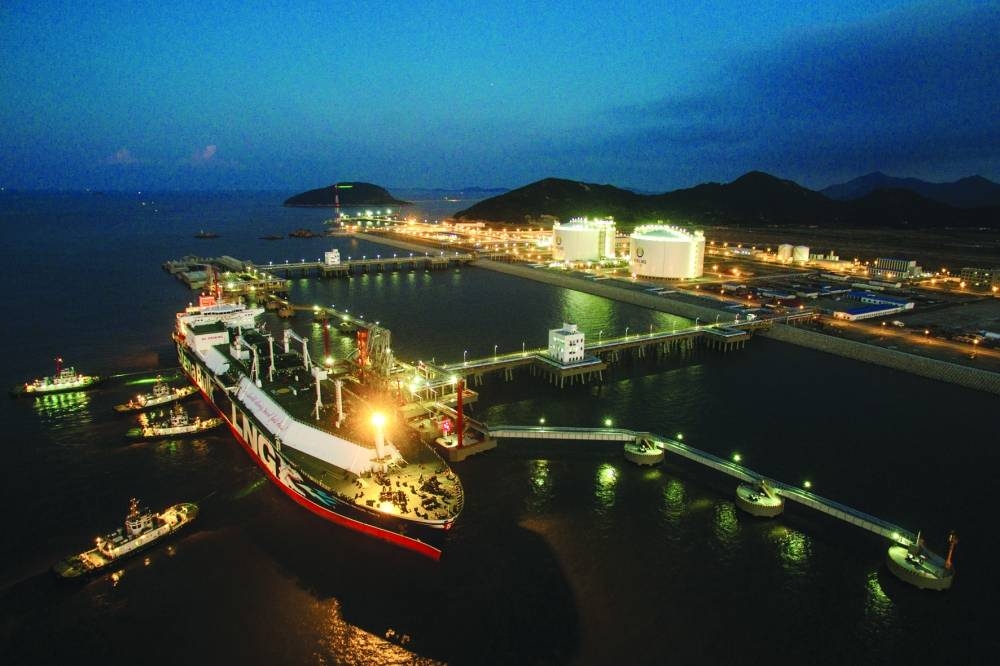Powered by Qatar's North Field, the Middle East region will add 140mn tonnes per year LNG liquefaction capacity until 2050, according to the Gas Exporting Countries Forum.
Globally, around 560mn tonnes per year of additional liquefaction capacity poised to launch from 2021 through 2050. This includes projects under construction and in all FEED (front-end engineering and development) stages, along with proposed, potential, stalled, and speculative ventures, GECF said in its latest ‘Global Gas Outlook 2050’.
North America will supply the largest liquefaction gains, adding nearly 160 mtpy supported by unconventional gas.
Global liquefaction capacity has grown from 270 mtpy in 2010 to 462 mtpy in 2021 and will more than double to about 1,032 mtpy by 2050.
LNG demand expected to reach 850 mtpy by 2050 will utilise over 80% of liquefaction capacity, making markets well-supplied throughout the forecast period
Qatar exported 77mn tonnes in 2021, GECF noted. QatarEnergy is working to increase its liquefaction capacity to 110 mtpy by 2026 and 126 mtpy by 2027.
Both pipeline and LNG infrastructure will grow by 2050, the report noted. Liquefaction and regasification capacity will dominate spending through 2030, while expansion is set to slow after 2040.
Export pipeline developments will endure through 2050, particularly in Eurasia and Europe.
Globally LNG demand will more than double from 372mn tonnes in 2021 to 850mn tonnes by 2050, fuelled by developing Asia’s strong demand.
The largest regasification capacity additions are expected to be in the Asia Pacific region.
Global regasification capacity grew from 630 mtpy in 2010 to 993 mtpy in 2021. By 2050, capacity could surge to almost 1,840 mtpy, when operating, under construction proposed; mothballed and stalled projects are considered. This would be more than double expected LNG demand of around 850mn tonnes.
Roughly 1,060 mtpy, or 60% of global capacity, will be located in the Asia Pacific region by 2050. Some 380 mtpy, or 20%, will be in Europe.
GECF has revised the European capacity figure upward by 100%, with growth being implemented before 2030.
Asian LNG demand remains subdued in the short term, also supported by an increase in domestic coal use where possible. High LNG spot import prices and a weakening global economic outlook dampen overall Asian gas demand growth, especially in price-sensitive markets.
China and South Asia are at the greatest risk of demand downgrades.
However, demand will rebound strongly when LNG supply availability increases and prices moderate around 2026.
China, Southeast Asia, and South Asia account for all the medium to long-term growth upside, while Northeast Asian demand remains flat and declines after 2030. Southeast Asia and South Asia will be the fastest growing LNG markets, GECF noted.
Several companies in China are building out some 50 mtpy of regasification capacity over the next two years, with total capacity reaching about 225 mtpy by 2050 – even as price sensitivity remains a key demand headwind.
Japan will be home to 210 mtpy, while South Korea and India will follow with around 140 mtpy and 145 mtpy, respectively.
European governments and utility companies have been quick to develop new regasification capacity but have yet to move meaningfully to long-term LNG contracts to secure supply.
European LNG imports will increase from 81 mtpy (111 bcm) in 2021 to 135mn tonnes (186 bcm) by 2030, while Europe is set to develop 72 mtpy (100 bcm) of additional regas capacity by 2025.
LNG deliveries to Europe in 2022 are expected to grow by over 40mn tons over 2021.
However, location and availability of existing regas capacity, along with connectivity constraints within the European gas network, limit access options for many potential European buyers.
As a result, GECF noted multiple countries have announced plans to install additional regas capacity via new or operating proposals. There are some 10 expansions planned at seven terminals between 2022 and 2030 totalling more than 30 bcm a year, it said.
Business
Qatar's North Field to power Mideast's 140 mtpy extra LNG liquefaction capacity until 2050: GECF

An LNG tanker is seen at the liquefied natural gas terminal owned by Chinese energy company ENN Group, in Zhoushan, Zhejiang province, China (file). Globally LNG demand will more than double from 372mn tonnes in 2021 to 850mn tonnes by 2050, fuelled by developing Asia’s strong demand, according to GECF.

